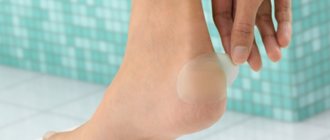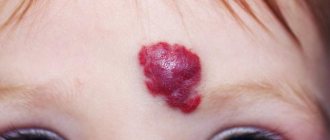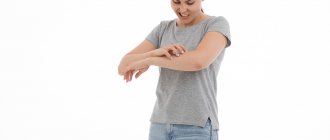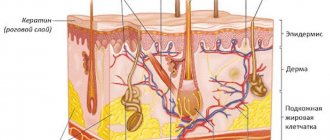Pale skin or cyanosis is a bluish discoloration of the skin and mucous membranes throughout the body or in fragments (sometimes in very limited areas of the skin, for example, only on the palms or fingers).
This phenomenon occurs due to a significant increase in the blood of the so-called reduced hemoglobin, or in other words, hemoglobin, which is not combined with oxygen.
Normally, the heart pumps blood into the lungs, where it is enriched with oxygen, and then goes back to the heart. It is then released to all organs and tissues, thereby reaching all parts of the body, supplying our organs and tissues with oxygen, and then returns with venous blood back to the heart, transporting carbon dioxide.
Cyanosis of the skin should be distinguished from the purple coloration of the face, which occurs with a disease such as erythremia or otherwise, a benign blood formation in which a large number of red blood cells appear in the blood. And also from cherry coloring of the skin, which occurs with carbon monoxide poisoning.
Cyanosis or pale skin coloring is divided into the following types:
- Central (throughout the body)
- Peripheral (in limited areas)
When does pallor occur throughout the body?
Central cyanosis or, in other words, pallor of all the skin of our body occurs when there is a violation of blood saturation in the lungs.
This happens in the following cases:
- Respiratory failure due to lung diseases
- Some blue-type heart defects, in which there is a pathological discharge of venous blood into the arterial bed due to defects in various walls of the heart, for example, with tetralogy of Fallot
- Exposure to various industrial poisons, such as aniline derivatives
- Taking certain medications (for example, sulfa drugs)
As a rule, the disappearance of the pathological factor, as well as the supply of oxygen, leads to a decrease in the severity of cyanosis.
Diagnostics
The examination is carried out under the supervision of cardiologists, pulmonologists and therapists. Subspecialty doctors are hired as needed.
A sample list of events would be:
- Questioning the patient about complaints and symptoms of the pathological process.
- Taking a history to better understand the origin of the disorder.
- ECG, ECHO-Kg. In order to investigate the condition of the heart. Anatomical (structural) and functional, detect defects and other disorders.
- Spirometry. Function of external respiration. To assess the condition of the pulmonary structures.
- General blood tests, biochemical, hormone tests. An expanded picture of lipids (lipid profile) is also needed.
- Allergy tests.
- Serological studies, bacteriological cultures, PCR, ELISA and other methods.
The question is put to rest by a specialized specialist or a group of doctors.
When does pale skin occur in certain areas of the body?
Peripheral cyanosis or local pallor of the skin, for example, the tips of the nose, lips, fingertips, occurs due to slow passage of blood through the capillaries and increased utilization of oxygen by tissues, as a result of which the content of reduced hemoglobin increases and gives the blood a dark color (bluish coloration of the skin).
This phenomenon occurs in the following cases:
- Hypothermia (spasmodic skin arterioles)
- Local circulatory disorders (for example, the presence of blood clots in the vessels of the legs with thrombophlebitis or arterial thrombosis)
- Formation of stenotic plaques in the arteries (with atherosclerosis)
- Severe heart failure (one of the main reasons for the slowing of blood flow through the capillaries due to a decrease in cardiac output. This phenomenon occurs, for example, with a history of myocardial infarction, cardiomyopathies, etc.)
- Pulmonary embolism (PE). Cyanosis occurs, more often, in the upper half of the body, and is associated with the separation of a blood clot from the veins, most often of the lower extremities, with further entry into the pulmonary artery. This cyanosis is accompanied by a pronounced deterioration of the condition and, with significant blockage of the pulmonary artery, can lead to death.
- Heart defects, such as acquired mitral valve stenosis.
Normally, blood from the lungs enters the left atrium, then through the mitral valve into the left ventricle. With stenosis (narrowing) of this valve, a full amount of blood no longer enters the left ventricle and, like a subway during rush hour, blood begins to stagnate in the previous sections, in particular in the lungs. In such cases, a bluish discoloration of the skin is often accompanied by severe shortness of breath, swelling, wheezing in the lungs and even sometimes hemoptysis.
Also, cyanosis may be present “paroxysmally” in the form of paleness and blue discoloration, for example, of the fingers. This happens with Raynaud's syndrome. Let us recall that Raynaud's syndrome is characterized by local spasm of arterioles in the extremities. Manifests itself in the form of clearly defined pallor of the skin. This syndrome is observed in the following cases:
- Diffuse connective tissue diseases, especially scleroderma
- Diseases of peripheral vessels (for example, with atherosclerosis of the vessels of the extremities)
- Vibration disease
- Frostbite
- Chronic finger injury
- Endocrine disorders (thyroid, gonads)
- Taking various medications (for example, cytostatics)
- Genetic disposition
An attack of peripheral spasm of arterioles in the extremities can be associated with severe anxiety, smoking, coldness or fatigue of the fingers.
Externally, Raynaud's syndrome is manifested by numbness, pain, paleness of the fingers due to spasm of the arteries and a changing bluish coloration of the skin.
This cyanosis results from compensatory dilation of the capillaries and veins, followed by redness of the affected finger at the end of the attack. This redness is due to the dilation of arterioles and capillaries when blood flow is restored (for example, when the limb is warmed).
According to statistics, in approximately half of patients with these symptoms, the cause cannot be identified; in these cases, Raynaud's phenomenon is diagnosed. It develops more often in young people, more often in women.
Attention to tests
Children rarely suffer from malignant tumors. They account for only 10% of all childhood diseases. Moreover, the majority of all cancers in children are hemoblastoses (blood tumors). One of the manifestations of the disease is a change in the cellular composition of the blood and anemia (decrease in the level of hemoglobin in the blood). Common symptoms of anemia include fatigue, weakness, lethargy and pale skin.
Of course, a decrease in hemoglobin levels is not always a sign of cancer in a child, but if there are problems in this area, you should be wary and conduct a more detailed examination with a doctor.
How to get a healthy glow back
If pallor is not caused by diseases, then you can get rid of it by following some simple rules. These rules will help change not only complexion, but also the general condition of the body:
Healthy sleep. A person who does not sleep enough may often experience a pale face. Lack of sleep and stress can cause other disorders in the body in addition to white skin. A healthy sleep of 7-8 hours a day can restore a healthy glow and freshness to the skin.- Proper nutrition. A pale person's diet should include more fruits and vegetables, especially citrus fruits, apples, and carrots. It is advisable to avoid fatty, floury and fried foods at least for a while until the skin acquires a natural color. It is also important to adhere to the norm of clean water consumption - 2 liters per day. Liquids obtained from drinks and food do not count.
- Face massage. A professional or even self-massage can restore a healthy glow to the skin in a short time. Massage should be done at least 5 minutes a day, and to achieve better results you can use a scrub. An excellent scrub is made from natural ground coffee. Coffee grounds should be mixed with honey and applied with massaging movements to the skin of the face. This peeling will not only give your skin a healthy tone, but will also help remove redness and flaking.
- Physical exercise. Exercising can not only give the body the desired shape, but also saturate the blood with the necessary oxygen, due to which active blood circulation occurs. Blood rushes to the surface of the skin and gives it a gentle glow. It is not necessary to play sports professionally; it is enough to spend half an hour a day training at home. Exercises can be viewed on the Internet.
Good dream
Your skin needs proper rest to recover. This is an elementary rule, but in the modern world it is often violated.
Try to improve your sleep schedule.
- Go to bed at 10 pm.
- Sleep at least 8 hours.
- Take care of the microclimate of the room. If the air is dry, turn on a humidifier at night.
Pale face in children
Mothers often wonder why their child’s face is pale. A doctor will help determine the cause by examining the baby’s skin, oral and nasal cavities, eyes and nails. Only after this will he be able to objectively assess his condition. If the child is active, eats well and plays, then the cause may be heredity or a lack of vitamin D.
If the baby is lethargic, drowsy, and gets tired quickly, then this may indicate the development of anemia. Parents of such a child should be especially concerned if dark circles appear under his eyes and bruises appear on his body for no apparent reason. This may be a symptom of diseases of the circulatory system or urinary tract.
Under no circumstances should you make a decision about treating a child on your own without examining a doctor.
Treatment
Therapy depends on the specific pathological process. Let's look at the problems in order with possible solutions:
- Heart defects. The operation is indicated. Plastic or prosthetics. For example, replacing a valve with an artificial one. There are no other options.
- Myocardial inflammation. Antibiotics and beta blockers are prescribed to relieve rhythm disturbances. If necessary, use cardioprotectors (for example, Mildronate).
- Functional deviations from cardiac structures. Protective agents (Riboxin and analogues), antiarrhythmics, and beta blockers are indicated as support measures.
- Coronary insufficiency. The same drugs are used. Plus, you need to find the root cause and eliminate it.
- Heart attack. The list is the same. Additionally, organic nitrates (not always), vitamins are used, and intravenous infusions of solutions are performed.
- Asthma. Bronchodilators (Berodual and similar), inhaled corticosteroids, oral hormones (Prednisolone and others), first and third generation antihistamines (Cetrin, Suprastin, Tavegil).
- Inflammation of the respiratory tract. Antibiotics, antivirals, hormonal drugs and similar.
- Respiratory failure. Glucocorticoids, bronchodilators. They look for the primary cause and carry out correction. In extreme cases, the patient is connected to a ventilator.
- Anemia. Iron supplements, B vitamins, also need to eliminate the cause of insufficient absorption of nutrients.
- Poisoning. Detoxification measures, introduction of antidotes. The correction is carried out in the hospital.
- Atherosclerosis. Statins, fibrates, nicotinic acid, special diet, giving up bad habits.
- Thrombosis. Antiplatelet agents, anticoagulants, also thrombolytics.
- Drug addiction and alcoholism. Detoxification measures, coding, rehabilitation.
- Infections. Antibiotics, anti-inflammatory drugs, analgesics, antipyretics, as well as antiviral and immunomodulators are prescribed.
There are a lot of options. The strategy needs to be developed individually.
Regular use of scrubs
Another necessary part of facial care is exfoliation. By clearing the skin of dead scales, we help it breathe and regenerate. We also create the effect of a polished surface, thanks to which the sun’s rays are better reflected and the skin glows.
Anti-aging care must necessarily include exfoliating procedures. They need to be done 1-3 times a week. As a rule, women use scrubs, but a more effective option is available at home - drybrushing (massage with a dry brush).
A dry brush polishes the skin until it squeaks. There will not be a single dead cell left on the face that interferes with normal light reflection. In addition, there is a deep effect on the tissue: spasming muscles relax, blood flow and lymphatic drainage increase, and collagen production in the skin is stimulated. All this is needed to rejuvenate the face and return it to a healthy, even color.
We recommend choosing a dry brush with natural bristles for your face. Go to www.beauty365.ru and look for the Beauty365 dry face brush, which is made from boar bristles.
Perform a massage with a brush on dry and clean skin. Follow the massage lines (see the tip on the Beauty365 facial brush packaging).
After the procedure, the skin will shed all excess and warm up - the perfect moment to nourish it with your favorite cream or oil. Pay attention to Beauty365 natural cosmetics: squalane, oils, balms (sold at www.beauty365.ru).
Natural rejuvenation: self-massage and exercises
Having mastered simple self-massage techniques, you can help your face every day and maintain the results for years. In addition, you don’t have to pay yourself for the procedure, you don’t have to endure inconvenience, travel somewhere, waste time, or rearrange your schedule.
You will find the best techniques for self-massage of the face in the basic marathon “SmeloNET” from MelAnnett. The course also includes exercises on posture, stretching the neck, and restoring mobility to the aponeurosis of the head. All this is necessary so that blood flows freely to your face, nourishes the skin, gives it radiance and an even color.
Read the details about the basic marathon “SmeloNET”, look at the photos of the participants and register!









